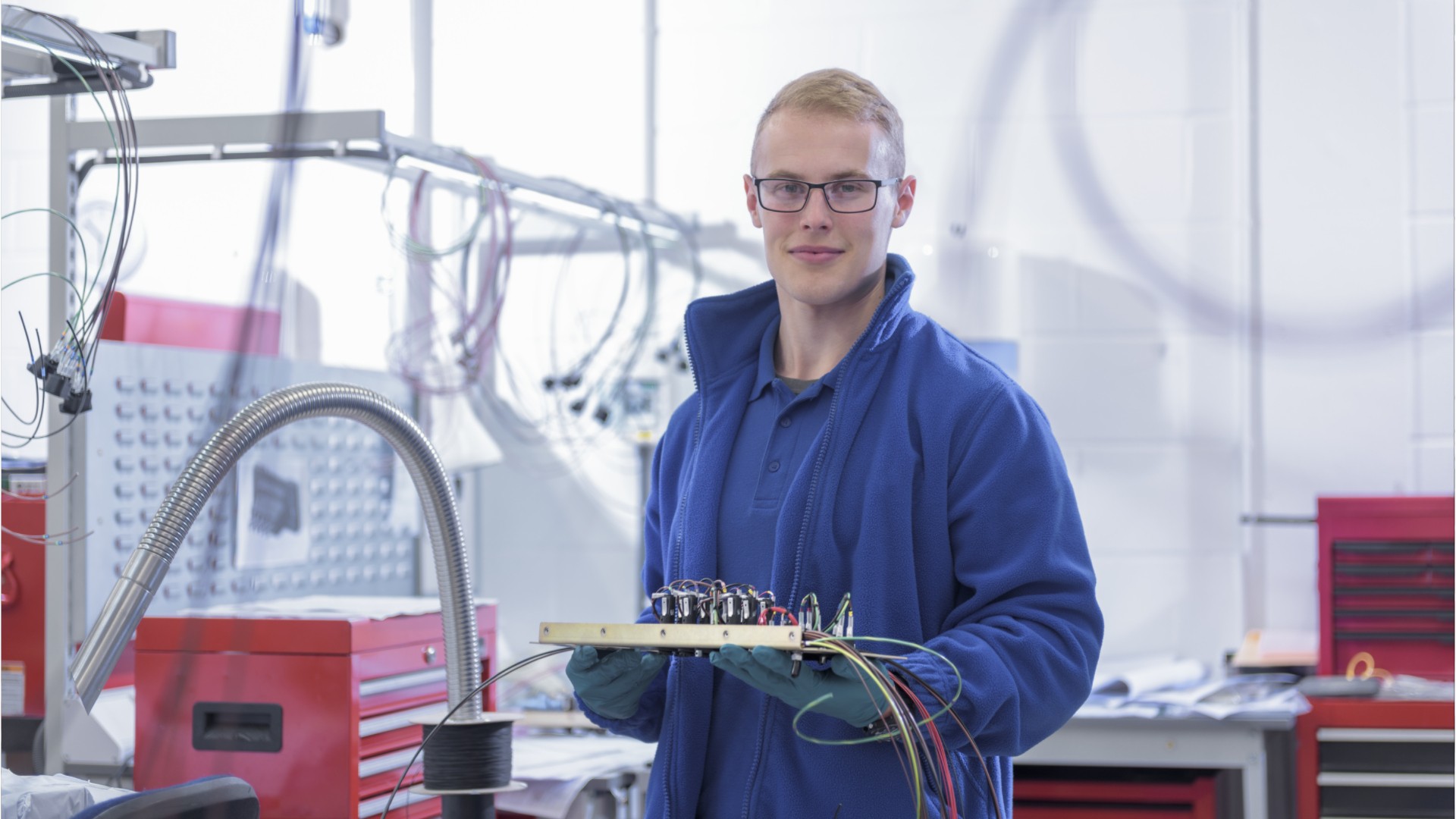Electrical & Electronic Engineering Technologists & Technicians
Electronics Engineering Technician, Engineering Technician (Engineering Tech), Engineering Technologist, Technologist
 Select a military branch to see samples.
Select a military branch to see samples.
Advanced Fighter Aircraft Integrated Avionics; Airborne Mission Systems Specialist Apprentice, RQ-4; Airborne Mission Systems Specialist Journeyman, MC-130P; Aircraft Armament Systems Helper, F-35; Electrical Power Production; Heating, Ventilation, Air Conditioning, and Refrigeration; Missile And Space Systems Electronic Maintenance Craftsman; Nuclear Weapons Apprentice; Sensor Operator Apprentice, AC-130J; Sensor Operator Journeyman, MQ-1
AH-64 Armament/Electrical/Avionics Systems Repairer; Aircraft Electrician; Automotive Maintenance Warrant Officer; Construction Engineering Technician; Electronic Warfare Specialist; Interior Electrician; MQ-1 Repairer; Radio Equipment Repairer; Senior Electronic Maintenance Supervisor; Special Forces Communications Sergeant
Aids to Navigation; Aviation Engineering Specialty; Damage Controlman; Electrician's Mate; Electronics Technician; Gunner's Mate; Information Systems Management; Machinery Technician; Material Maintenance Specialty; Naval Engineering Specialty
Advanced Extremely High Frequency (AEHF) Technician; Aircraft Avionics Technician, AV-8B; Aircraft Electrical Systems Technician, KC-130; Aviation Meteorological Equipment Technician, OMA/IMA; Digital Wideband Systems Maintainer; Electronics Maintenance Officer (Ground); Fixed-Wing Aircraft Flight Engineer, KC-130; Fixed-Wing Aircraft Power Plants Mechanic, F-404; Fixed-Wing Transport Aircraft Specialist, C-20; Ordnance Systems Engineer
25mm Machine Gun System (MGS) MK 38 MOD Gun Weapon System (GWS) Technician; AEGIS Weapon System MK-7 (BL 3/5) Technician/AEGIS Fire Control System MK-99/Operational Readiness Test System MK-1 (TK-I or II) Supervisor; AN/SPS-48G(V)1 Maintenance Technician; Anti-Submarine Warfare Technician; Cooperative Engagement Capability (CEC) AN/USG-2 Cooperative Engagement Transmission Processing Set (CETPS) Technician; Fire Control Inspection and Repair Officer; IUSS Maintenance Technician; MK-41 Vertical Launching System (VLS) Baseline (BL) III Operation and Maintenance Technician; Ship's Electronic Material Officer; Submarine Navigation Operator
No similar titles were found.
What they do:
Apply electrical and electronic theory and related knowledge, usually under the direction of engineering staff, to design, build, repair, adjust, and modify electrical components, circuitry, controls, and machinery for subsequent evaluation and use by engineering staff in making engineering design decisions.
On the job, you would:
- Modify, maintain, or repair electronics equipment or systems to ensure proper functioning.
- Replace defective components or parts, using hand tools and precision instruments.
- Set up and operate specialized or standard test equipment to diagnose, test, or analyze the performance of electronic components, assemblies, or systems.
Knowledge
Engineering and Technology
- computers and electronics
- product and service development
Arts and Humanities
- English language
Math and Science
- arithmetic, algebra, geometry, calculus, or statistics
- physics
Business
- customer service
Skills
Basic Skills
- reading work related information
- thinking about the pros and cons of different ways to solve a problem
Problem Solving
- noticing a problem and figuring out the best way to solve it
People and Technology Systems
- figuring out how a system should work and how changes in the future will affect it
- thinking about the pros and cons of different options and picking the best one
Abilities
Verbal
- read and understand what is written
- listen and understand what people say
Ideas and Logic
- make general rules or come up with answers from lots of detailed information
- use rules to solve problems
Visual Understanding
- quickly compare groups of letters, numbers, pictures, or other things
- see hidden patterns
Personality
People interested in this work like activities that include practical, hands-on problems and solutions.
They do well at jobs that need:
- Cautiousness
- Attention to Detail
- Dependability
- Intellectual Curiosity
- Achievement Orientation
- Integrity
Technology
You might use software like this on the job:
Analytical or scientific software
- The MathWorks MATLAB
- Wolfram Research Mathematica
Presentation software
- Microsoft PowerPoint
Computer aided design CAD software
- Autodesk Revit
- Bentley MicroStation
Education
Education: (rated 3 of 5)
Job Outlook
Below Average
New job opportunities are less likely in the future.
Explore More
- Calibration Technologists & Technicians
- Electrical & Electronics Repairers, Commercial & Industrial Equipment
- Electronics Engineers
- Mechanical Engineering Technologists & Technicians
- Robotics Technicians
You might like a career in one of these industries:
See more details at O*NET OnLine about Electrical & Electronic Engineering Technologists & Technicians.





